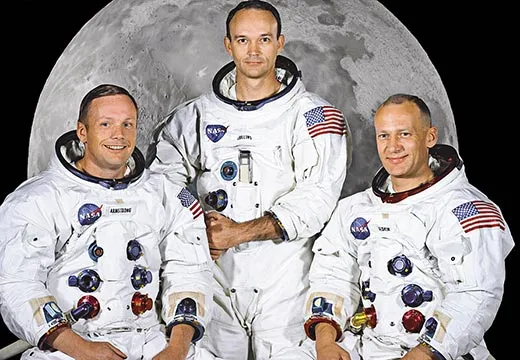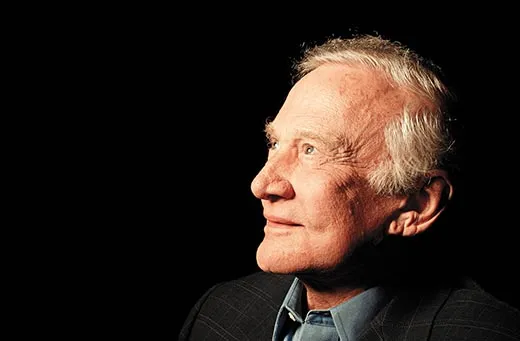Q and A: Astronaut Buzz Aldrin on the Moon
Buzz Aldrin, the second man to walk on the moon, reflects on the Apollo 11 mission
/https://tf-cmsv2-smithsonianmag-media.s3.amazonaws.com/filer/Buzz-Aldrin-Apollo-11-631.jpg)
Buzz Aldrin, 79, the second man to walk on the moon, recently published Magnificent Desolation, his memoir about his life since the 1969 lunar landing. He spoke with the magazine's Joseph Caputo.
Looking back, how would you have changed the lunar module?
It did what it was supposed to do. Maybe we could have put the antennas in better places, but they all eventually worked. It was just amazing how much deployable cargo we were able to stow in the descent stage. The ascent stage looked ugly, but it didn't need to be smooth and shiny-looking. It needed to function in a vacuum, and it got the job done.
What were your most memorable moments in the lunar module?
The 11 minutes of powered descent to the lunar surface. That was the pioneering effort we'd been preparing for: putting together the analysis of what we needed in terms of navigation, thrust, control, autopilot and communications. We had to be able to smoothly execute that maneuver and simultaneously retain the option to abort at any time and return to orbit.
Do you think the United States should be planning a return to the moon?
I don't think we should send humans unless they engage in some sort of commercial activity that could help defray the very large cost of living in an environment as hostile as the moon. In the meantime, we should be charting a clear pathway that will increase our capabilities: developing better spacecraft and communication technologies, finding ways to protect ourselves against long-duration radiation effects and bone and muscle deterioration.
What are the take-away lessons?
We need to focus on how best to make the transition from the space shuttle to the space station to space exploration. Otherwise, we end up with a gap that's difficult to fill. We didn't have a gap between the Mercury and Apollo programs because we put in an interim program—Gemini—that really made Apollo possible. But we didn't follow up very well. We could have used both Skylabs as a platform for further exploration, instead of putting the backup in the Smithsonian National Air and Space Museum.
/https://tf-cmsv2-smithsonianmag-media.s3.amazonaws.com/accounts/headshot/joseph-caputo-240.jpg)


/https://tf-cmsv2-smithsonianmag-media.s3.amazonaws.com/accounts/headshot/joseph-caputo-240.jpg)